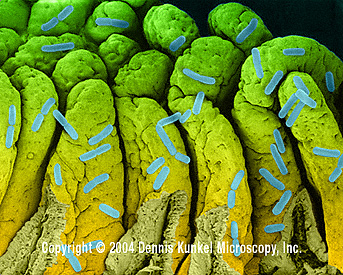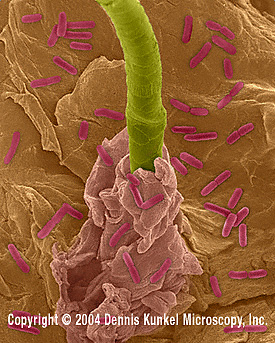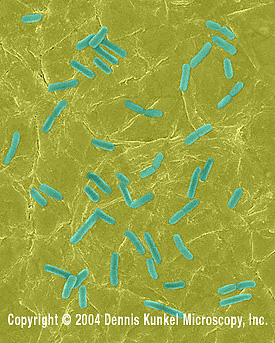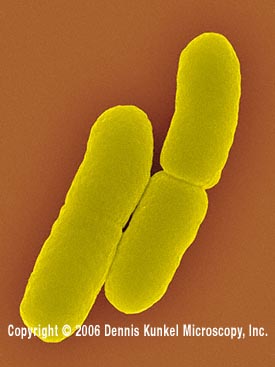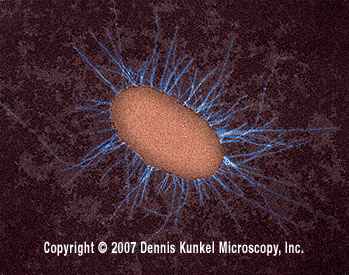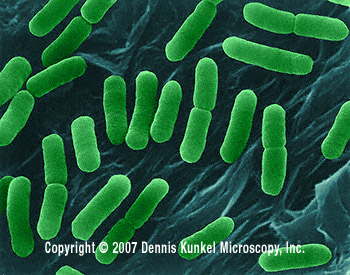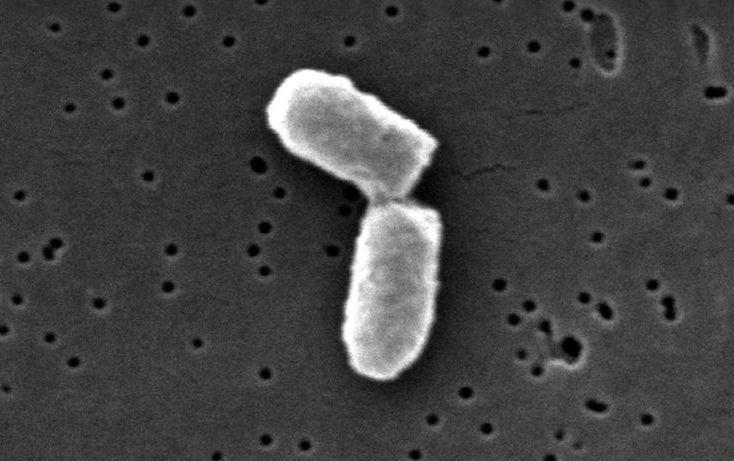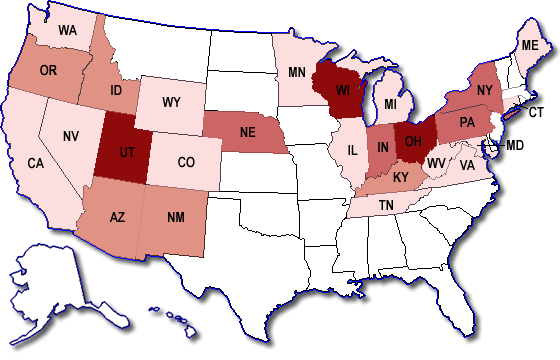Pathology
| What would happen if our dear old friend Popeye ate too much bad spinach? |
Photo from a Public Domain, Retrieved from Wikimedia Commons
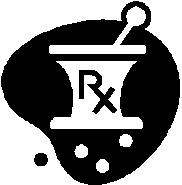 Chances are, if the spinach contained
E. coli O157:H7, he would
become very ill and be in need of medical attention. Poor
Popeye, don't worry Olive Oyl will take care of you!
Chances are, if the spinach contained
E. coli O157:H7, he would
become very ill and be in need of medical attention. Poor
Popeye, don't worry Olive Oyl will take care of you!
Unfortunately, there is more than one pathogenic strain of E. coli. As stated in Interesting Facts, there are over 700 serotypes of E. coli. These are based on three different antigens: the O antigen which is derived from the cell wall, the H antigen which is derived from flagella that are used for motility, and the K antigen which is derived from a polysaccharide capsule that is secreted. Most of these specific strains can be further divided into three more categories based on how they infect the human body: Urinary Tract Infections (UTI), Neonatal Meningitis, and Intestinal Diseases (gastroenteritis).
1. Urinary Tract Infections
90% of UTI's are caused by Uropathogenic E. coli (UPEC). This is caused by E. coli colonizing in the feces and/or the perineal region, and then somehow ascending to the urethra (the urinary tract) and finally the bladder causing inflammation. The bacteria are able to adhere and aggregate to the urethra and the bladder by use of fimbriae. The movement of E. coli can occur during sexual intercourse, wiping back to front after using the restroom, among other ways, and are more common in females. Symptoms include painful urination, frequent urination, and cloudy urine. They are easily treated with antibiotics.
E. coli fimbriae
© Dennis Kunkel Microscopy, Inc. Used with Permission
2. Neonatal Meningitis
Neonatal Meningitis (inflammation of the meninges), which affects 1/2000 infants, is caused by E. coli strains invading the either the nasopharynx or the GI tract, absorbed into the bloodstream, and then the blood carries the bacteria to the meninges. This is treated by antibiotic therapy, most often with ampicillin. This can be fatal if untreated.
3. Intestinal Diseases
E. coli is best known for its ability to infect the intestinal system, causing diarrhea, and these can be further categorized into five subgroups based on their pathogenicity. These diseases are treated with antibiotics.
-
Enterotoxigenic E. coli
(ETEC)~
This strain of E. coli causes diarrhea
-
Enteroinvasive
E. coli
(EIEC)~
This strain of E. coli causes
dysentery-like
diarrhea by invading and multiplying on epithelial cells in the
colon and cause the destruction of those cells.
This is transmitted solely
by infected humans. This is
similar to an infection by
Shigella. -
Enteropathic
E. coli
(EPEC)~
This strain of E. coli causes watery (and possibly bloody)
diarrhea in infants in developing countries.
These bacteria are ingested
through contaminated drinking water and sometimes meat.
The E. coli bacteria interfere with signal
transduction of cells in the colon.
This is sometimes referred to Diffusely Adherent
E. coli (DAEC),
or traveler’s diarrhea. -
Enteraggregtative
E. coli
(EAEC)~
This strain of E. coli causes diarrhea in young children by
adhering to the intestinal mucosa and release of
EAST
(EnteroAggregative ST)
toxin.
This is different from ETEC in that there is no invasion or
inflammation. -
Enterohemorrhagic
E. coli (EHEC)~
This strain of
E. coli causes bloody diarrh
 in infants and travelers in underdeveloped countries or by poor
water sanitation. The bacteria are ingested through contaminated
water or food and invade the
intestinal
mucosa.
Symptoms can either be mild or severe (like
cholera),
and can appear without any form of fever.
in infants and travelers in underdeveloped countries or by poor
water sanitation. The bacteria are ingested through contaminated
water or food and invade the
intestinal
mucosa.
Symptoms can either be mild or severe (like
cholera),
and can appear without any form of fever. ea,
and if left untreated, can develop into Hemolytic Uremic Syndrome (HUS),
which can be fatal.
E.
coli O157:H7 is the most known worldwide.
EHEC strains produce toxins which are released into the lumen
of the GI tract. An
iron deficiency enhances the ability of
the bacteria to produce this toxin.
These E. coli come mostly from water or food, such
as raw meat, milk, unpasteurized fruits and vegetables, among
others.
ea,
and if left untreated, can develop into Hemolytic Uremic Syndrome (HUS),
which can be fatal.
E.
coli O157:H7 is the most known worldwide.
EHEC strains produce toxins which are released into the lumen
of the GI tract. An
iron deficiency enhances the ability of
the bacteria to produce this toxin.
These E. coli come mostly from water or food, such
as raw meat, milk, unpasteurized fruits and vegetables, among
others.
Reported Cases of E. coli O157:H7 in the U.S. in 2006
(Wisconsin is the highest with 49 cases)
Photo from a Public Domain, Retrieved from the CDC
Back to Organismal Biology Websites
Questions or Comments: Contact Justine Moder
©April 2008

